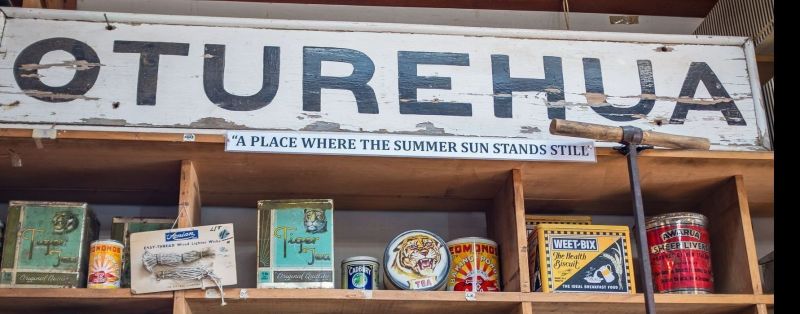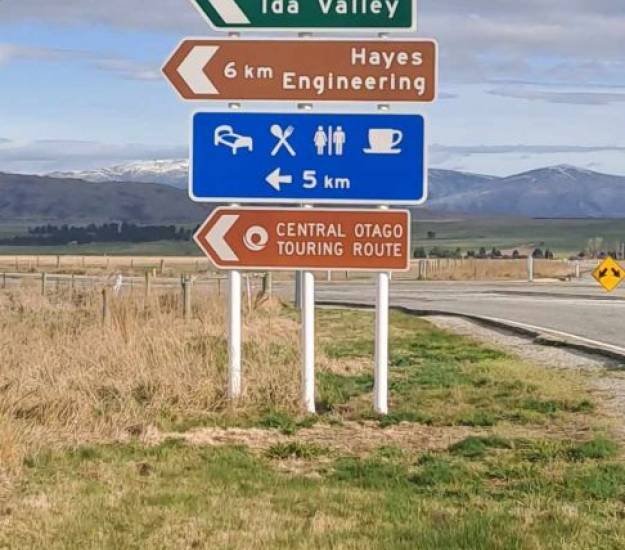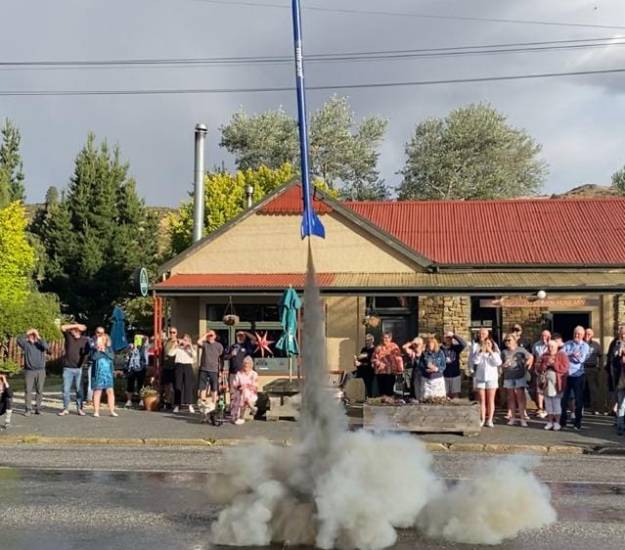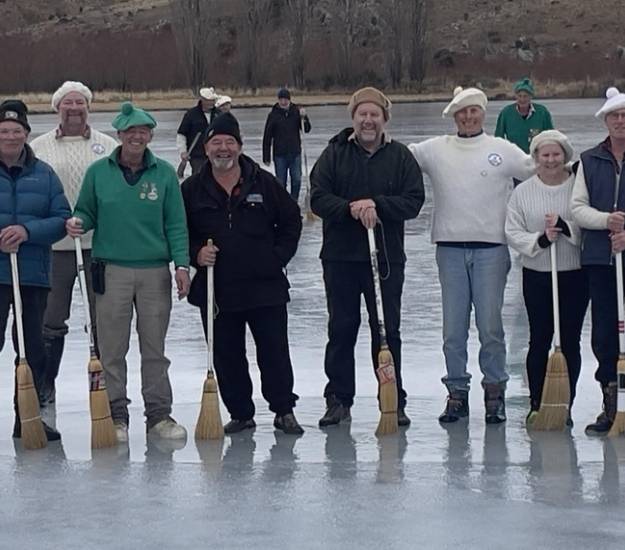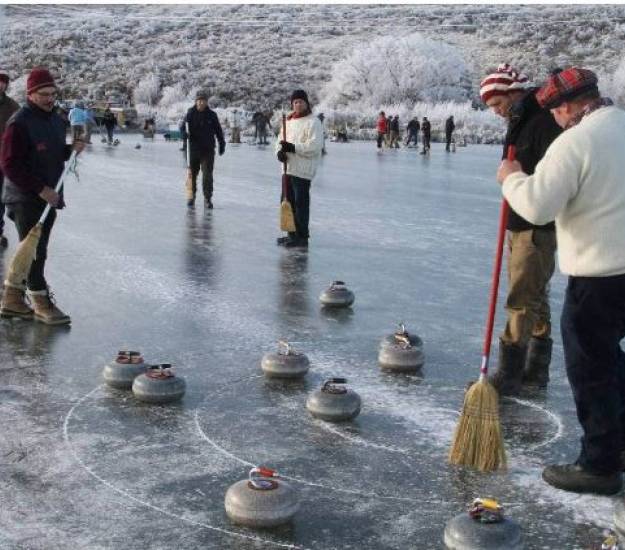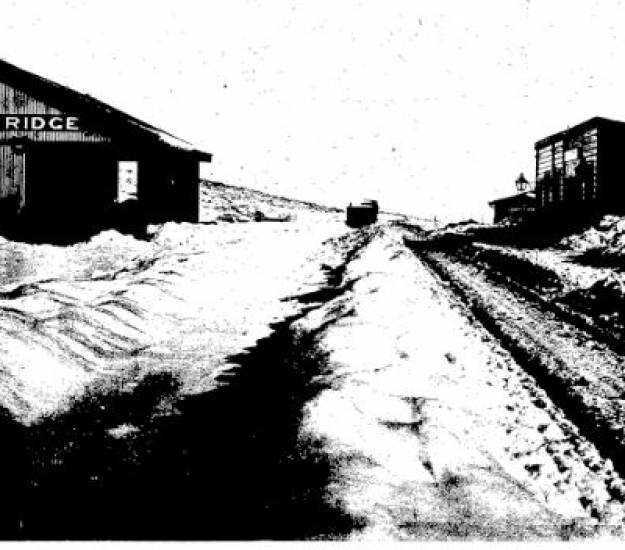A place where the summer sun stands still
The small town of Oturehua is nestled at the foot of the northeastern end of Rough Ridge in the Ida Valley. At a height of 500 metres above sea level, its climate is challenging and stimulating. The town's considered to be one of the hottest, coldest and driest in New Zealand. Today in this magnificent, expansive valley, we continue to embrace the delight, challenge and privilege of life in this place of extremes. This wide, wonderous space where the silent, everlasting land waits patiently and the summer sun stands still
To the west of the town, across the valley, is the aptly named Blackstone Hill. To the northeast, barring the way, is the Hawkdun Range and Mt Ida. The Hawkduns, as most refer to them, are even better known today, featuring in the work of artist Grahame Sydney and in the poetry and prose of local resident Brian Turner.
Visitors and locals alike find the quality of and changes in the valley's light entrancing. Often the cloud formations seem to mimic the shapes of the hills and mountains. In Oturehua one is smack in the middle of what's commonly termed 'Big Sky Country'; on clear nights, the heavens are alive with extraordinary bright, bristling congregations of stars.
A little-known fact about the Ida Valley is that streams feed into it from both ends -north and south and combine to run 'out the middle', through the Poolburn Gorge alongside the Rail Trail, and westwards into the Manuherikia Valley. This, so it's contended, distinguishes the Ida Valley from anywhere else in New Zealand. ·
For a time, in the late 19th century, Oturehua was known as Rough Ridge, but in 1907, at the suggestion of the local Member of Parliament, it was given a Maori name, Oturehua. O (place of) tu (to stand) rehua. (the star Antares) . Translated as "Place where the summer star stands still"
Before the arrival of Europeans, southern Maori quarried quartzite from land in the vicinity of Oturehua and used the stone to make flake tools for hunting, mainly for cutting and skinning.
Those interested in mining in general often take the short walk up to the Golden Progress mine site off Reef Road. The mine and its associated buildings and equipment date from 1868 until its final closure in 1936. For a time, from 1891 to 1928, the complex was shut. The Golden Progress gave up significant amounts of gold and is one of the more notable of such historic sites in the Otago Goldfields Park. Restoration work and maintenance is ongoing.
But ever since the mid- to late-19th century, farming sheep and beef in particular has remained at the heart of life and living in the district. Diversification has been occurring, but thus far the stern climate continues to insist there are limits. Just ask some of the thousands who have cycled the increasingly popular Otago Central Rail Trail and battled the occasional gale-force nor'west wind, or have felt the bite of a hard frost and a keen breeze off the snow covered hills and mountains.
The Oturehua Railway Hotel and Gilchrist's Store opposite (which the oldest continuously operating store in New Zealand) were built in 1899 to cater for the expected rise in the population with the coming of the railway. Thomas Gilchrist bought the store in 1902; it was run by that family for the next 87 years. A post office and a blacksmith were also located in the town's main street. A butcher and another store, Perry's, traded in Reef Road, about two kilometres north of the town.
Stables for coaches and horses were erected on the site occupied today by Becker's Transport, and for some years horses and wagons were used to deliver coal from local pits in the valley to customers throughout the Maniototo region. Later, coal was loaded onto trains at Oturehua. The railway, which operated from 1901 to 1990, was used for both passenger and freight services.
Children from the local area attended school in Oturehua from 1895 to 1996, and the school's swimming pool, complete with a recent cover, remains as a valued community amenity.
Oturehua is also home to Hayes Engineering Works, established 1895, where a variety of valuable farm equipment was invented. Ernest and Hannah Hayes were imaginative and hardworking trailblazers. Theirs is a fascinating, memorable story. Historic mud-brick buildings and a museum at the site, overseen and managed by Heritage New Zealand, make for an intriguing, informative visit.
see also : A place to call home
Idaburn Dam
The dam, on your left as you come into town from the south, was initially capable of holding 23 million cubic metres of water, and was built in 1931 in order to irrigate local farms with a combined area of 230ha. Prior to the dam, in the late 1800s, a rabbit-processing factory was situated there. It survived until the early 1900s. Brown trout and perch were liberated in the dam, and the fish are still caught there.
The dam has long been a popular venue for winter sports: curling, ice skating and ice hockey. For years it has been regarded as home to a national bonspiel attended by representatives of clubs from all over New Zealand. However, in recent times, winters haven't been quite so severe, and conditions have become less frequently suitable for these traditional winter sports. Nonetheless, Oturehua is still home to three curling clubs:
The paddocks above the dam are the venue for the annual mid-winter Brass Monkey motor cycle rally run by the Oturehua Winter Sports Club in association with the Otago Motor Cycle Club since 1980. Up to 2000 or more motor cycle enthusiasts attend the rally, and at times have endured temperatures as low as minus 15 degrees and more. Hot food and a large bonfire plus a fireworks display, liquid refreshments live bands help distract, entertain, and alleviate discomfort.
The Oturehua Winter Sports Club is a vital part of the local community. Its fund raising activities have contributed much to the amenities of the town and district. One thinks of the hall, the sports ground with its pavilion, play area and equipment for children, tennis court and quality grass cricket pitch. And adjacent, across the road, there's the covered swimming pool. Recently, the community funded and placed commemorative display panels and a wooden cross alongside the hall, which nowadays even has a small lending library.. The display panels contain photographs and names of 'Soldiers of Oturehua, Blackstone Hill and Ida Valley districts who served in the Great War 1914-1918 and World War 1939-1945'.
Blackstone Hill
Blackstone Hill (more commonly known as Hill's Creek), about eight kilometres north of Oturehua, was the earliest settlement in the area. It sprang up as a 'canvas town' after gold was found in Woolshed Creek and miners immediately rushed to seek their fortunes in the nearby hills and creeks.
Hill's Creek got its name from Alfred Hill, a publican from the 1860s whose enterprising behaviour included epic journeys, driving his coach down-country to Dunedin and returning with a full complement of 'ladies' prepared to entertain and dance with the miners. - For a time, Hill's Creek was a bustling township sporting 13 hotels, a post office, two drapers, a bakery, a butcher, a corn store and a tennis club.
Blackstone School as it was known opened in 1874 and closed in 1949. It catered for farming and miners' children. In recent years, the school, which had survived in reasonably good condition, has been undergoing further restoration. The Blackstone Hill cemetery, still in use today, dates from 1864 when Peter Curle, who had died in the lock-up, was interred there. But the first 'official' burial, complete with documented detail, didn't take place until 1874.
From the cemetery, in which graves carry the names of many of the older established families in the district, one looks out and down the valley towards Oturehua and Rough Ridge. From left to right, the Hawkdun and Ida ranges are prominent. Farther away, to the east, are the Kakanui Mountains. Swing to the right and look south down the Ida Valley to the hills in which the Poolburn and Manorburn dams are tucked away. And, then, beyond them, the riven and rocky hill country rolls away and down to Roxburgh and other towns in the Clutha Valley.
Hill's Creek, the highest point on SH 85 en route to Alexandra, is one of those many places in Otago's interior which result in reflections of a kind that keep returning; a place where, as Brian Turner reflects in his poem In the Hill's Creek Cemetery, 'Dry grass wafts. / Serenity's hanging on somehow ... / and, overhead [are.] wisps of cirrus / that tell us a big nor'wester's not far away.'
Ida Valley
Once the Central Otago railway reached Oturehua, it wasn't long before work to extend it further down the valley began. Between 1901 and 1904, about 350 people lived in what became known as Ida Valley, a settlement approximately eight kilometres down the valley from Oturehua.
People lived at the Ida Valley township principally to build the railway tracks and the viaducts through the Poolburn Gorge into the Manuherikia Valley. Houses were sledged in to Ida Valley from Ranfurly, and the township had two hotels, a saddlery and a wheelwright. A school opened there in 1907 and hung on until 1960. Before 1907, children living on farms in the valley were often educated at home, but some were schooled at Poolburn.
The Ida Valley railway station was an impressive building in its day and incorporated a turntable for engines. Nowadays the station serves as a superior musterers' hut over the back of the southern end of the Hawkdun Range. As for former licensee Tom Spain's Railway Hotel, and the school which was nearby, both remain at Ida Valley, where they are privately owned and used.
Foretold
There's a warm breeze blowing down
Off the mountains
now that most of the snow has gone.
There's a song somewhere
in the hearts of every man and woman
with the heart to sing.
There's elation born of relief
and the return of hope and grace
in the flight of a hawk over Rough Ridge.
There's beauty in the unruffled
olive green and grey feathers of silver-eyes
feeding on sugar on my schist stone wall.
There's rivers and streams that are
quieter again, and sheep and cattle
whose stoicism never falters.
There's the feeling exile's over,
and that, for all its limitations,
what's foretold has barely begun.
Brian Turner
What our previous guests have said
We stayed as a group of 8 including two young kids (8 and 4yrs) on the Otago Rail Trail. Roger and Fleur were amazing hosts, we loved the honesty bar, the warm
Victoria
Stayed at Inverlair Lodge overnight while cycling the Otago Rail Trail. Put this one on your list of places to stay. Modern, warm and cosy with a small number
Graham C
The lodge is absolutely stunning and Fleur & Rog are exceptional hosts. They gave us a lot of local advice and we could chat to them all day long. Loved
Mark & Susan
Inverlair lodge is AMAZING. Your hosts are the very friendly and helpful, and they are the best people you will meet on the whole Rail trail. The lodge is
Andrew S
Our group had an excellent stay. Our hosts were amazing and made everyone feel so welcome. This is a beautiful large house in an excellent scenic location. The
Tony, Australia
An amazing weekend away. Tranquil. Clean and tidy. Exquisite meals and friendly owners. Definitely worth a second... and third visit!
Tracey Coertse

